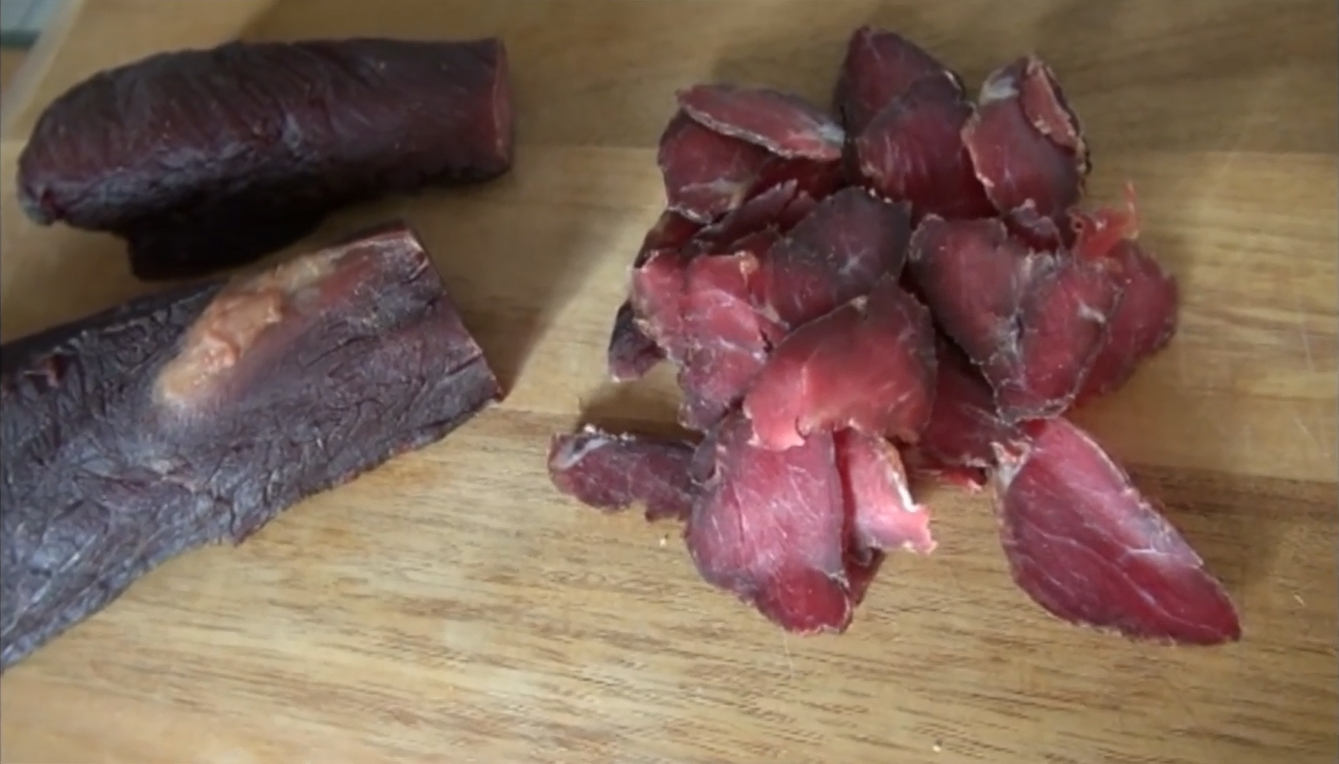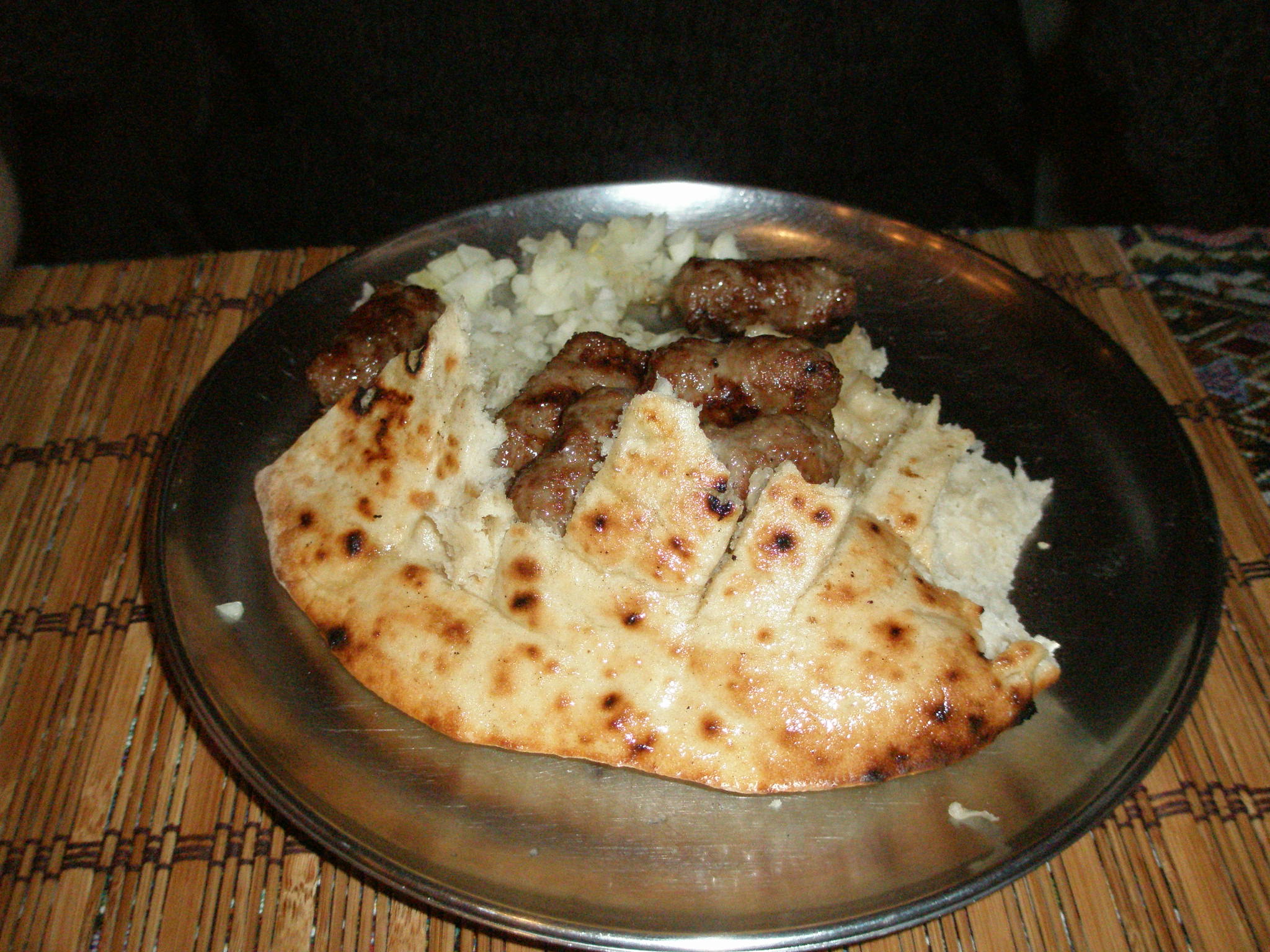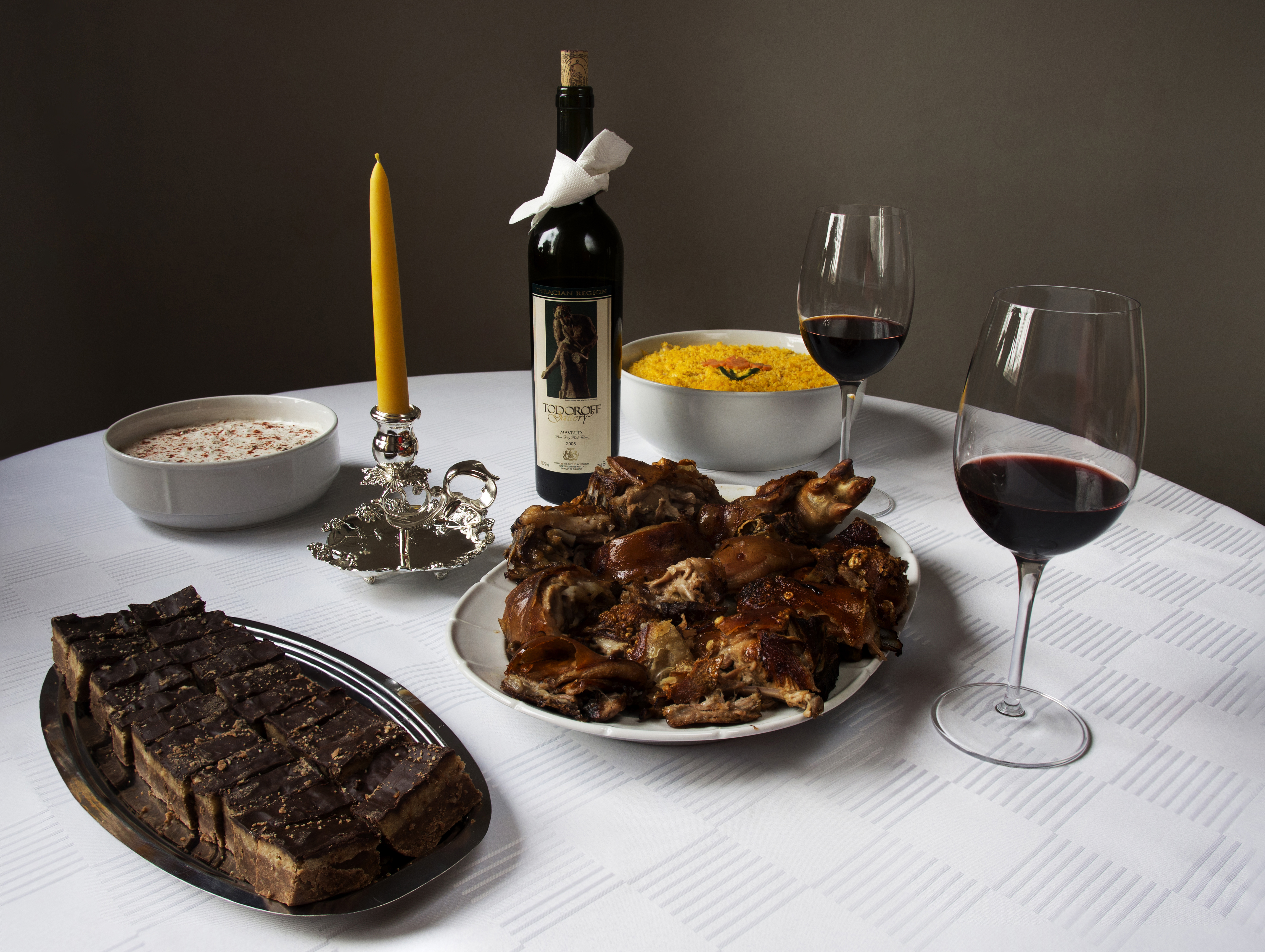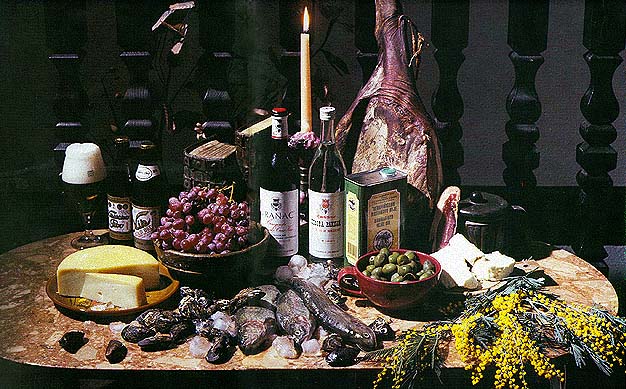|
Suho Meso
Suho meso (literally: "dry meat") is a smoked beef preparation eaten in Bosnian, Serbian, Croatian and Montenegrin cuisine. The meat is cured in a coarse salt for multiple days before being hung to dry over a fire for multiple days or weeks, depending on the size of meat. This process is traditionally done in the winter to prevent the meat from spoiling. It is similar to pastirma, except there is no specific spice blend Çemen spread around the meat. See also * Beef jerky * Bresaola * List of dried foods * List of smoked foods This is a list of smoked foods. Smoking (cooking), Smoking is the process of seasoning, flavoring, cooking, or food preservation, preserving food by exposing it to smoke from burning or smoldering material, most often wood. Foods have been smoke ... References Dried meat Smoked meat Bosnia and Herzegovina cuisine Serbian cuisine {{serbia-cuisine-stub ... [...More Info...] [...Related Items...] OR: [Wikipedia] [Google] [Baidu] |
Bosnian Cuisine
Bosnian cuisine ( Bosnian: ''bosanska kuhinja'') is the traditional cuisine of Bosnia and Herzegovina. It is influenced by Ottoman, Austro-Hungarian and Balkan cuisines. Ingredients Bosnian cuisine is a mixture of the local regions such as the Balkan countries, Greece, Italy and Turkey, with many recipes coming from the Ottoman era. It uses some spices, but usually in moderate quantities. Most dishes are light, as they are cooked in lots of water; the sauces are often natural, consisting of little more than the natural juices of the vegetables in the dish. Typical ingredients include tomatoes, potatoes, onions, garlic, bell peppers, cucumbers, carrots, cabbage, mushrooms, spinach, zucchini, dried and fresh beans, plums, milk, paprika and cream called pavlaka and kajmak. Typical meat dishes include beef lamband pork. Some local specialties are ćevapi, ''burek'' (börek), 'zeljanica' spinach pie spanakopita, 'sirnica' cheese pie, 'paprike' stuffed peppers, sarma, 'pilav' ta ... [...More Info...] [...Related Items...] OR: [Wikipedia] [Google] [Baidu] |
Serbian Cuisine
Serbian cuisine () is a Balkan cuisine that consists of the culinary methods and traditions of Serbia. Its roots lie in Serbian history, including centuries of cultural contact and influence with the Greeks and the Byzantine Empire, the Ottomans, and Serbia's Balkan neighbours, especially during the existence of Yugoslavia. Historically, Serbian food develops from pastoral customs that involved the keeping of sheep in mountain highlands, in a climate and regional context that favoured animal husbandry over vegetable farming; Serbian food is therefore traditionally richer in animal products and basic grains—corn, wheat and oats—than fresh vegetable dishes. Following the abandonment of widely practiced pastoral lifestyles, Serbian food emerged through the Middle Ages heavily dependent not on lamb or mutton, but on the keeping of pigs for the annual cull and the production of various cured meats, such as sausages, bacon and ham products. The Serbian government has passed laws ... [...More Info...] [...Related Items...] OR: [Wikipedia] [Google] [Baidu] |
Croatian Cuisine
Croatian cuisine () is heterogeneous and is known as a cuisine of the regions, since every region of Croatia has its own distinct culinary tradition. Its roots date back to Classical Antiquity, ancient times. The differences in the selection of foodstuffs and forms of cooking are most notable between those in mainland and those in coastal regions. Mainland cuisine is more characterized by Slavic features and influences from the more recent contacts with Turkish cuisine, Turkish, Hungarian cuisine, Hungarian and Austrian cuisine, Austrian cuisine, using lard for cooking, and spices such as black pepper, paprika, and garlic. The coastal region bears the influences of Greek cuisine, Greek and Roman cuisine, Roman cuisine, as well as of the later Mediterranean cuisine, in particular Italian cuisine, Italian (especially Venetian). Coastal cuisines use olive oil, herbs and spices such as rosemary, Salvia officinalis, sage, bay leaf, oregano, marjoram, cinnamon, clove, nutmeg, and lemon a ... [...More Info...] [...Related Items...] OR: [Wikipedia] [Google] [Baidu] |
Montenegrin Cuisine
Montenegrin cuisine is a result of Montenegro's geographic position and its long history and tradition. Review The first major influences to Montenegrin cuisine came from the Levant and Turkey, largely via Serbia: sarma, musaka, pilav, pita, gibanica, burek, ćevapi, kebab, đuveč, and Turkish sweets such as baklava and tulumba. Hungarian cuisine influences stews and sataraš. Central European cuisine is evident in the prevalence of crêpes, doughnuts, jams, many types of biscuits and cakes, and various kinds of breads. Montenegrin cuisine also varies geographically; the cuisine in the coastal area differs from that of the northern highland region. The coastal area is traditionally a representative of Mediterranean cuisine, with seafood being a common dish. The traditional dishes of Montenegro's Adriatic coast, unlike its heartland, have a distinctively Italian influence as well. [...More Info...] [...Related Items...] OR: [Wikipedia] [Google] [Baidu] |
Pastirma
Pastirma or Pasterma, also called pastarma, pastırma, pastrma, pastourma,, basdirma, basterma, basturma, or aboukh is a highly seasoned, air-dried cured beef that is found in the cuisines of Albania, Armenia, Azerbaijan, Bosnia and Herzegovina, Romania, Bulgaria, Egypt, Kurdish region, Greece, Cyprus, Iraq, the Levant, North Macedonia, Turkey and Georgia. Etymology and history ''Basturma'' existed in ancient Armenian cuisine, where it was known as ''aboukh (). The word ''abookhd'' (Classical Armenian ''apukht'') was already used in the Armenian translation of the Bible, in the fifth century AD, meaning “salted and dried meat”. According to T. Durham, basturma is of Armenian origin and is still prepared in the Middle East according to old family recipes. ''Pastırma'' is mentioned in Mahmud of Kashgars Diwan Lughat al-Turk and Evliya Çelebis Seyahatname. According to Turkish scholar Biron Kiliç, and other sources, the term is derived from the Turkic noun ''bast� ... [...More Info...] [...Related Items...] OR: [Wikipedia] [Google] [Baidu] |
Beef Jerky
Jerky is lean trimmed meat strips which are dehydrated to prevent spoilage and seasoned to varying degrees. Normally, this drying includes the addition of salt to prevent microbial growth through osmosis. The word "jerky" derives from the Quechua word ''ch'arki'' which means "dried, salted meat". Modern manufactured jerky is often marinated, prepared with a seasoned spice rub or liquid, or smoked with low heat (usually under ). Store-bought jerky commonly includes sweeteners such as brown sugar. Jerky is ready to eat, needs no additional preparation, and can be stored for months without refrigeration. A proper protein-to-moisture content is required in the final cured product to ensure maximum shelf-life. Many products that are sold as jerky consist of highly processed, chopped, and formed meat rather than traditional sliced whole-muscle meat. These products may contain more fat, but moisture content, as in the whole-muscle product, must meet a 0.75 to 1 moisture-to pr ... [...More Info...] [...Related Items...] OR: [Wikipedia] [Google] [Baidu] |
Bresaola
Bresaola is air-dried, salted beef (but it can also be made of horse, venison, and pork) that has been aged two or three months until it becomes hard and turns a dark red, almost purple colour. It is made from top (inside) round, and it is lean and tender, with a sweet, musty smell. It originated in Valtellina, a valley in the Alps of northern Italy's Lombardy The Lombardy Region (; ) is an administrative regions of Italy, region of Italy that covers ; it is located in northern Italy and has a population of about 10 million people, constituting more than one-sixth of Italy's population. Lombardy is ... region. The word comes from the diminutive of Lombard (' braised'). Serving As an appetiser ( antipasto), bresaola is usually sliced paper-thin and served at room temperature or slightly chilled. See also * List of dried foods * List of smoked foods Notes References External links Consorzio tutela Bresaola della Valtellina Protected Geographical Status Con ... [...More Info...] [...Related Items...] OR: [Wikipedia] [Google] [Baidu] |
List Of Dried Foods
This is a list of dried foods. Food drying is a method of food preservation that works by removing water from the food, which inhibits the growth of bacteria and has been practiced worldwide since ancient times to preserve food. Where or when dehydration as a food preservation technique was invented has been lost to time, but the earliest known practice of food drying is 12000 BC by inhabitants of the modern Middle East and Asia."Historical Origins of Food Preservation". Accessed June 2011. Dried foods Processed foods B * Baker's yeastused as a[...More Info...] [...Related Items...] OR: [Wikipedia] [Google] [Baidu] |
List Of Smoked Foods
This is a list of smoked foods. Smoking (cooking), Smoking is the process of seasoning, flavoring, cooking, or food preservation, preserving food by exposing it to smoke from burning or smoldering material, most often wood. Foods have been smoked by humans throughout history. Meats and Fish (food), fish are the most common smoked foods, though cheeses, vegetables, and ingredients used to make beverages such as whisky, smoked beer, and ''lapsang souchong'' tea are also smoked. Smoked beverages are also included in this list. Smoked foods Beverages * Lapsang souchong – a kind of tea. * Mattha – an Indian buttermilk or yogurt drink that is sometimes smoked. * Smoked beer – beer with a distinctive smoke flavor imparted by using malted barley dried over an open flame''Beer'', by Michael Jackson, published 1998, pp.150-151 ** Grätzer. * Suanmeitang – a Chinese smoked plum drink. * Scotch Whisky – some scotch is made from grains that have been smoked over a peat fire. Fi ... [...More Info...] [...Related Items...] OR: [Wikipedia] [Google] [Baidu] |
Dried Meat
Dried meat is a feature of many cuisines around the world. Examples include: * Kulen Slanina Pečenica * Aliya, sun-dried meat from Kenya * Bakkwa or rougan, Chinese salty-sweet dried meat sheets. * Biltong, a cured meat that originated in Southern Africa. * ''Bògoǫ'', a dried and smoked meat, often caribou, of the Dené people of northern Canada. * Borts, air-dried strips of horse or cow meat used as traveling food or to last the winter in Mongolia. Often ground into powder and mixed with water to create soup. * Bresaola, air-dried salted beef originally from the Valtellina valley in northern Italy. * Brési, made in the canton of Jura and in Jura Bernois in Switzerland and in the department of Doubs in France. * Bündnerfleisch, air-dried meat from Kanton Graubünden in Switzerland. * Carne-de-sol, sun-dried salt beef from Brazil. * Carne seca, air-dried meat from Mexico. * Cecina, lightly smoked, dried, and salted meat from northwestern Spain (Asturias, León, ... [...More Info...] [...Related Items...] OR: [Wikipedia] [Google] [Baidu] |







